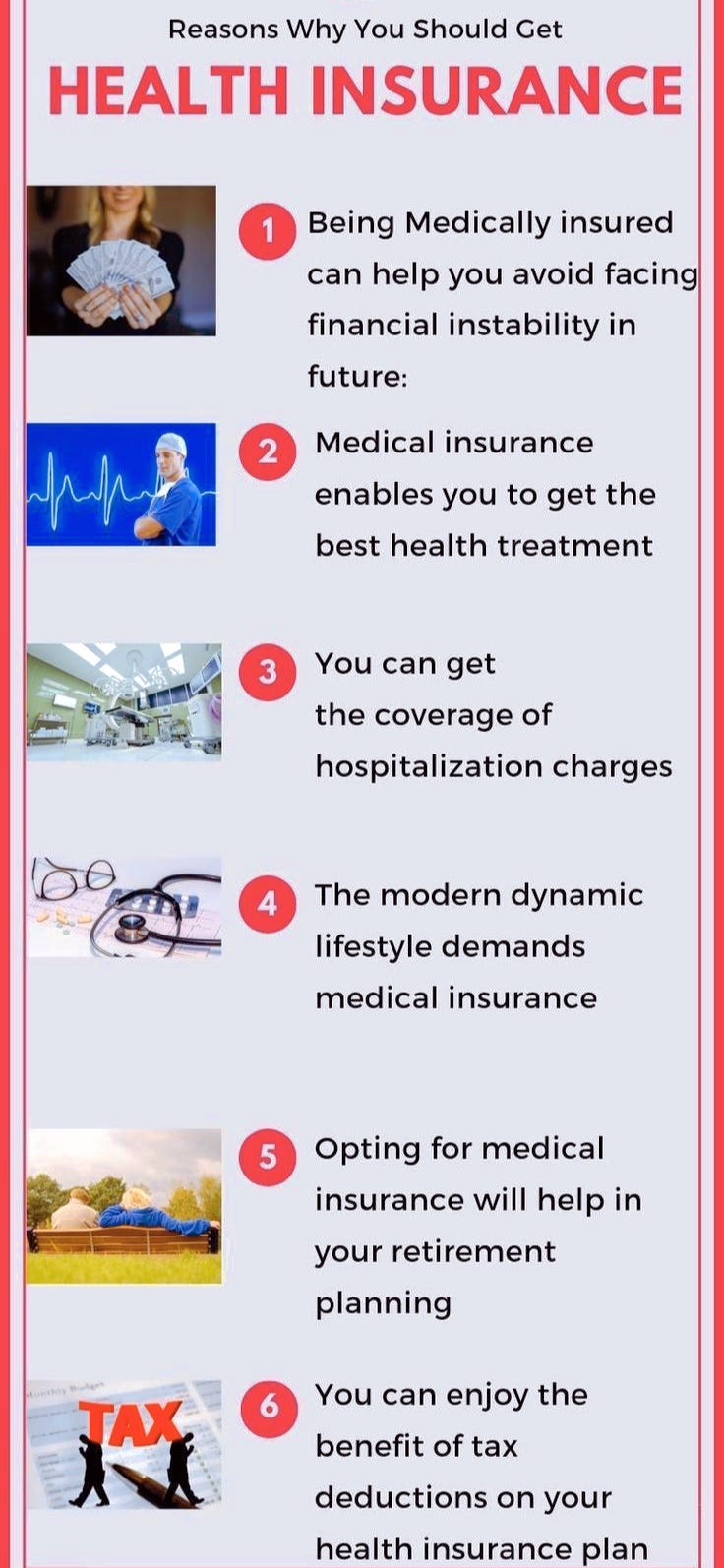Not known Facts About Medicare Advantage Agent
Not known Facts About Medicare Advantage Agent
Blog Article
Our Medicare Advantage Agent Ideas
Table of ContentsLittle Known Questions About Medicare Advantage Agent.The Facts About Medicare Advantage Agent UncoveredMedicare Advantage Agent Can Be Fun For Anyone

follows from confusing the relatively young age profile of the uninsured with the better health, usually, of more youthful persons. This covers the web link between health and wellness status and wellness insurance. For those without access to workplace health insurance, bad wellness is a possible barrier to acquiring nongroup insurance coverage because such protection might be very valued, exclude preexisting problems, or be simply inaccessible. The number of without insurance Americans is not specifically large and has not transformed in recent years. 7 out of 10 participants in a country wide depictive survey assumed that fewer Americans did not have health insurance coverage than in fact do(Fronstin, 1998). Approximately half(47 percent )believed that the variety of individuals without medical insurance reduced or stayed continuous over the latter fifty percent of the last decade(Blendon et al., 1999). This drop of nearly 2 million in the variety of individuals 'without insurance coverage (a decrease
of around 4 percent)is certainly a favorable modification. With a softer economic situation in 2000 the most up to date reported gains in insurance policy protection may not proceed(Fronstin, 2001 ). The decline in the number of uninsured will not proceed if the economic situation continues to be slow-moving and health care costs remain to exceed inflation. This is due to the fact that the data were accumulated for a duration of solid economic performance. Of the estimated 42 million individuals who were without insurance, all however about 420,000(concerning 1 percent)were under 65 years old, the age at which most Americans come to be qualified for Medicare; 32 million were grownups in between ages 18 and 65, about 19 percent of all adults in this age; and 10 million were youngsters under 18 years old, about 13.9 percent of all kids (Mills, 2000). These quotes of the variety of individuals without insurance are created from the yearly March Supplement to the Current Population Study (CPS), carried out by the Census Bureau. Unless or else noted, nationwide price quotes of individuals without health and wellness insurance policy and percentages of the populace with various kinds of insurance coverage are based upon the CPS, one of the most widely made use of source of price quotes of insurance coverage and uninsurance rates. These surveys and the price quotes they yield are defined briefly in Table B. 1 in Appendix B - Medicare Advantage Agent. These studies vary in size and tasting techniques, the questions that are inquired about insurance
10 Easy Facts About Medicare Advantage Agent Explained
protection, and the moment period over which insurance policy coverage or uninsurance is determined(Lewis et al., 1998, Fronstin, 2000a ). Still, the CPS is particularly valuable because it creates yearly estimates relatively promptly, reporting the previous year's insurance protection approximates each September, and due to the fact that it is the basis for a consistent collection of estimates for greater than 20 years, permitting for evaluation of patterns in protection over time.
:max_bytes(150000):strip_icc()/coordination-of-benefits-1850523021ff453f8f4f2e19a99324ea.png)
A Biased View of Medicare Advantage Agent
Over a three-year period starting early in 1993, 72 million individuals, 29 percent of the U.S. population, lacked insurance coverage for at the very least one month. Within a single year(1994), 53 million people experienced at least a month without insurance coverage(Bennefield, 1998a). Six out of every ten without insurance adults are themselves used. Functioning does boost the possibility that one and one's household participants will have insurance coverage, it is not an assurance. Even members of households with 2 permanent wage earners have practically a one-in-ten opportunity of being without insurance (9.1 percent without insurance rate)(Hoffman and Pohl, 2000 ). The partnership between health and wellness insurance coverage and access to care is well established, as documented later in this chapter. Although the partnership in between medical insurance and health end results is neither straight view neither easy, a considerable scientific and health and wellness services research literary works web links health and wellness insurance policy coverage
to better accessibility to care, much better high quality, and boosted individual and population health status. For example, the 2nd record, on personal health end results for without insurance adults, is stood for by the inner circle of the number, while the 3rd report, on family well-being, incorporates the topics of the second record yet highlights a different device of evaluation, particularly, the family. The sixth record in the collection will provide info about techniques and initiatives carried out locally, statewide, or nationally to address the absence of insurance policy and its negative influences. Levels of evaluation for taking a look at the effects of uninsurance. This conversation of wellness insurance policy coverage concentrates mainly on the united state populace under age 65 because virtually all Americans 65 and older have Medicare or various other public protection.
In addition, it focuses particularly on those with no medical insurance for any type of size of time. The issues encountered by the underinsured remain in some aspects comparable to those encountered by the without insurance, although they are typically less serious. Uninsurance and underinsurance, nevertheless, entail definitely different plan concerns, and the strategies for addressing them may differ. Throughout this research and the 5 records to adhere to, the main focus gets on individuals without medical insurance and therefore no aid in paying for healthcare past what is offered through charity and safeguard organizations. Medical insurance is an effective element impacting invoice of treatment due to the fact that both individuals and physicians reply to the out-of-pocket cost of services. Wellness insurance policy, however, is neither required neither sufficient to access to medical solutions. The independent and direct effect of health
insurance insurance policy protection access accessibility health wellness solutions well established. Others will obtain the healthcare they require also without medical insurance, by paying for it expense or seeking it from service providers who supply care cost-free or at extremely subsidized rates. For still others, health insurance policy alone does not guarantee invoice of care due to various other nonfinancial barriers, such as an absence of health and navigate here wellness treatment suppliers in their area, limited accessibility to transport, illiteracy, or etymological and social differences. Formal research about uninsured populaces in the United States dates to the late 1920s and early 1930s when the Board on the Expense of Treatment created a collection of records about funding physician office gos to and hospitalizations. This concern came to be salient as the numbers of medically indigent climbed up throughout the Great Anxiety. Empirical studies continually sustain the web link in between accessibility to care and boosted health outcomes(Bindman et al., 1995; Starfield, 1995 ). Having a regular resource of care can be considered a predictor of access, as opposed to a straight measure of it, when wellness end results are themselves made use of as gain access to indications. This extension of the idea of gain access to dimension was made by the IOM Board on Monitoring Gain Access To to Personal Health Treatment Solutions(Millman, 1993, p. Whether or not moms and dads are insured appears to influence whether or not their children get treatment along with exactly how much careeven if the kids themselves have insurance coverage(Hanson, 1998). The health and wellness of parents can affect their capacity to look after their youngsters and the degree of household anxiety. Bothering with their kids's access to care is itself a resource of anxiety for parents. Three phases comply with in this report. Phase 2 supplies an introduction of exactly how employment-based medical insurance, public programs and individual insurance plans operate and connect to give substantial but insufficient insurance coverage of the U.S. populace. This includes a testimonial of historical fads and public laws affecting both public and exclusive insurance policy, a discussion of the communications among the different sorts of insurance policy, and an evaluation of why people relocate from one program to one more or wind up

Report this page